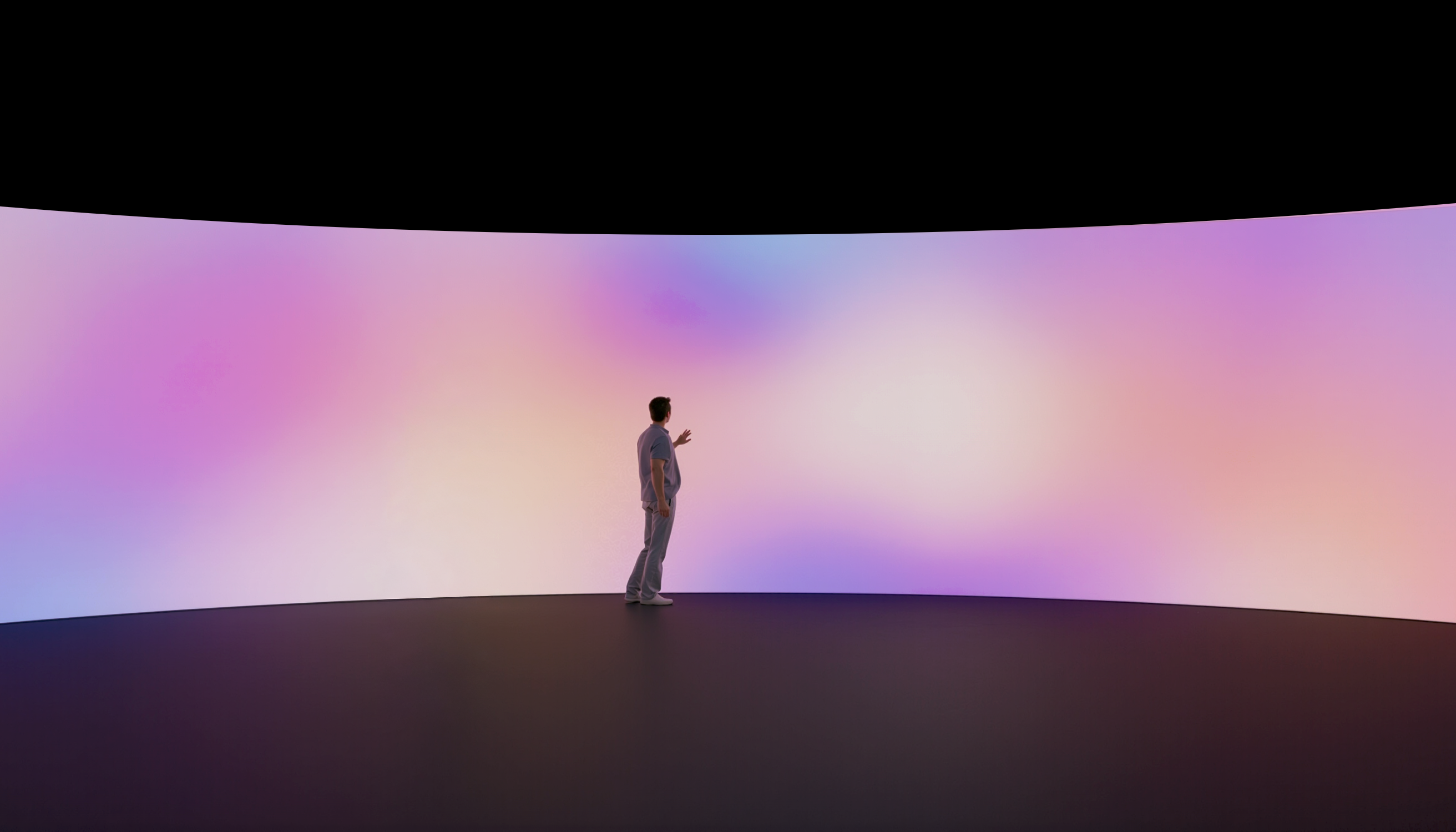

My goal is to create a digital-physical environment in which users become aware of their own and others' physiological states or signals. By translating data such as heart rate, heart rate variability (HRV), breathing rhythm, and galvanic skin response into real-time visuals and sounds, the installation fosters a unique kind of interaction: one that goes beyond language and invites emotional reflection and embodied presence. Thus learning empathy and mindfulness that have been proven to lower stress, better cultural integration and prosocial behaviour
The installation uses technology not as a means of control but as a catalyst for presence, empathy, and reflection. Within a 360° environment of LED walls, floor projections, and spatial sound, the space reacts in real time to the physiological and spatial behavior of its participants. Biometric sensors capture heart rate, breathing rhythm, and skin response, while tracking systems such as LIDAR, UWB, or Wi-Fi map each visitor’s position and proximity to others. These live data streams are processed through TouchDesigner and translated into generative visuals and soundscapes that mirror the participants’ inner states and interactions. By transforming invisible biological signals into a shared sensory experience, the work explores how technology can foster awareness, connection, and emotional resonance within a collective space.
The design system translates physiological and spatial data into a continuously evolving audiovisual fabric. Movements, heart rhythms, and proximity generate patterns that overlap, dissolve, and reform—living systems in constant transformation. Visual compositions emerge from organic structures, pulsating textures, and fluid transitions, while the soundscape reacts through shifting frequencies, density, and spatial distribution. The result is a dynamic web of light, form, and sound that makes interhuman perception tangible and creates an aesthetic experience of connection and resonance.


